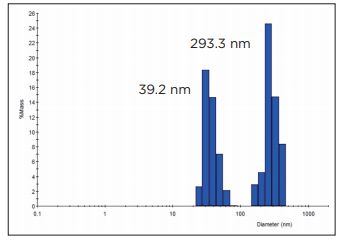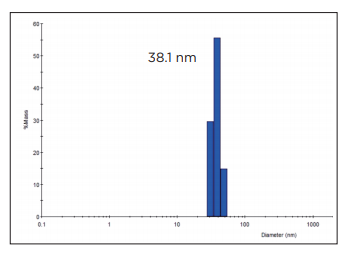A method of grading nanoparticles using ultracentrifugation in order to determine the accurate particle diameter
Knowing the accurate size of synthesized nanoparticles such as metal colloid, ink, silica or latex is an important key in nanotechnology research. Dynamic light scattering is frequently used as a method of measuring the size of these particles.
In the experiment this time, grading was performed by using ultracentrifugation to precipitate the large nanoparticles and keep only the smaller nanoparticles in the supernatant sample. This sample was measured using the zeta potential nanoparticle diameter measurement system, DelsaMax PRO, in order to determine the accurate particle diameter.
Measurement of the particle diameter
prior to centrifugation

Measurement procedure prior to centrifugation and results
50 nm and 300 nm latex standard particles were added to ultrapure water, and the DelsaMax PRO was used to measure the particle diameter.
Two peaks were detected at 39.2 nm and 293.3 nm.
Measurement of the particle diameter after to centrifugation
 Measurement procedure after centrifugation and results
Measurement procedure after centrifugation and results
The latex standard particle solution described above was centrifuged at 100,000 xg (42,000 rpm) for 10 minutes, and then the supernatant was used to measure the particle diameter.
The 300 nm standard particles had precipitated, and only the peak for the small particles was detected.
Discussion
Based on these measurement results, we learned that ultracentrifugation is a useful means of grading nanoparticles. Also, in this experiment, it was possible to determine the accurate particle diameter even for a sample showing polydispersion prior to centrifugation, but in general, it will be possible to make more accurate measurements with samples showing monodispersion. In this case as well, grading using ultracentrifugation could be useful.

